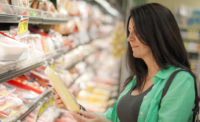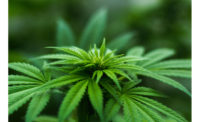2020 predictions for CPG, retail industries
CPG players will see increased integration of robots throughout the industry, growth in frictionless shopping experiences and enhanced ability to cater to consumer shopping experiences through computer vision.

The new decade will follow a similar trajectory toward widespread adoption and integration of advanced technologies across industries. In particular, consumer packaged goods (CPG) players will see increased integration of robots throughout the industry, growth in frictionless shopping experiences and enhanced ability to cater to consumer shopping experiences through computer vision.
Rise of cobots
Much of the future of retail and CPG workplaces rests on the relationship between humans and robots. Collaborative robots, known as cobots, are a perfect example of this balance between man and machine. These robots can safely work alongside humans, and have been deployed in a variety of retail environments. On the CPG side, manufacturers and distributors are leveraging cobots to assist in order picking, sorting and doing more repetitive, time-consuming tasks that involve strenuous or physical labor.
Imagine being a warehouse worker and having to recount inventory in your distribution center (some can reach over half a million square feet). Warehouse inventory control is a long and mundane task for humans. Knowing this, many distribution centers and CPG manufacturers are launching cobots to better monitor inventory and ensure accuracy, efficiency and integrity.
Retailers are already placing cobots on the front lines of customer engagement. For example, GIANT Food Stores, Carlisle, Pa., introduced Marty, a new robotic assistant. Marty assists his human co-workers by patrolling the store. If his sensors (located within his eyes) detect a spill, mess, out of stock or something else affecting the customer experience, he will alert a human co-worker to address it.
It’s important to note that robots cannot replace most human labor because they lack human problem-solving and critical-thinking capabilities. This is called “augmented intelligence,” the concept of robots working alongside humans in multiple roles vs. “unitaskers” that can only perform a single, repeated task. These cobots augment human labor, which is exactly what we will see more of in 2020 and beyond.
New sources of meat
Plant-based “meats” have been all the rage this past year. According to experts from Acosta, Jacksonville, Fla., “sales of plant-based food grew by double digits and at five times the rate of total food sales in the past year, with continued growth expected.” Not only have consumers eagerly flocked to plant-based burgers, restaurants and fast food chains have begun offering plant-based meat options as well. This increases consumers’ exposure to the products, in turn increasing their likelihood of purchasing more for consumption at home.
Indeed, plant-based meat options -- with chicken, sausage and meatballs now joining the original ground “beef” options -- can be found in many grocers’ refrigerated and frozen food aisles. That momentum is expected to continue in 2020, meaning that CPG companies and retailers should leverage data and advanced analytics tools like prescriptive analytics (which can sense demand in near-real time) to begin preparing for the upcoming surge in demand, especially for new product introductions.
Frictionless shopping innovation
Retailers have spent 2019 testing various technologies to improve the checkout experience, and that momentum will continue into 2020. One technology drawing significant interest is frictionless checkout.
Frictionless checkout is new enough that it has no single definition, but can loosely be defined as a portfolio of technologies and innovations that make the retail checkout process smoother and more efficient for the consumer. The most common example is the self-checkout register, which sometimes seems full of friction, but retailers are experimenting well beyond this. Examples include self-pay kiosks throughout the store, scan-as-you-shop devices or apps and even stores that charge you automatically as you walk out the door -- no checkout or cashiers required.
Due to “liquidation of demand” by customers (essentially, the expectation that all companies offer a similar level of technology in their consumer experience), retailers will continue to innovate in 2020 as they strive for a truly frictionless checkout.
Complementing planning systems with systems of reality
As consumer preferences change and competition for shelf space intensifies, CPG companies and retailers need to ensure their execution is aligned with plans. Many organizations lack the visibility to get a full picture of store-level execution, which in turn makes it difficult to ensure planogram accuracy. Computer vision technology, which allows retailers and CPG companies to compare an image of the actual shelf – known as a “realogram” – with the planogram, will enhance visualization and unlock clearer insight into execution. Combined with mobile computers, users will be able to calculate the delta between system planning vs. reality.
As we enter the next “roaring 20s,” retailers and CPG organizations will experience technological revolutions involving sophisticated AI tools like prescriptive analytics and innovation in mobile devices and robots that will lead to increased productivity, optimized shopping and employee experiences and greater customer satisfaction.
Looking for a reprint of this article?
From high-res PDFs to custom plaques, order your copy today!





